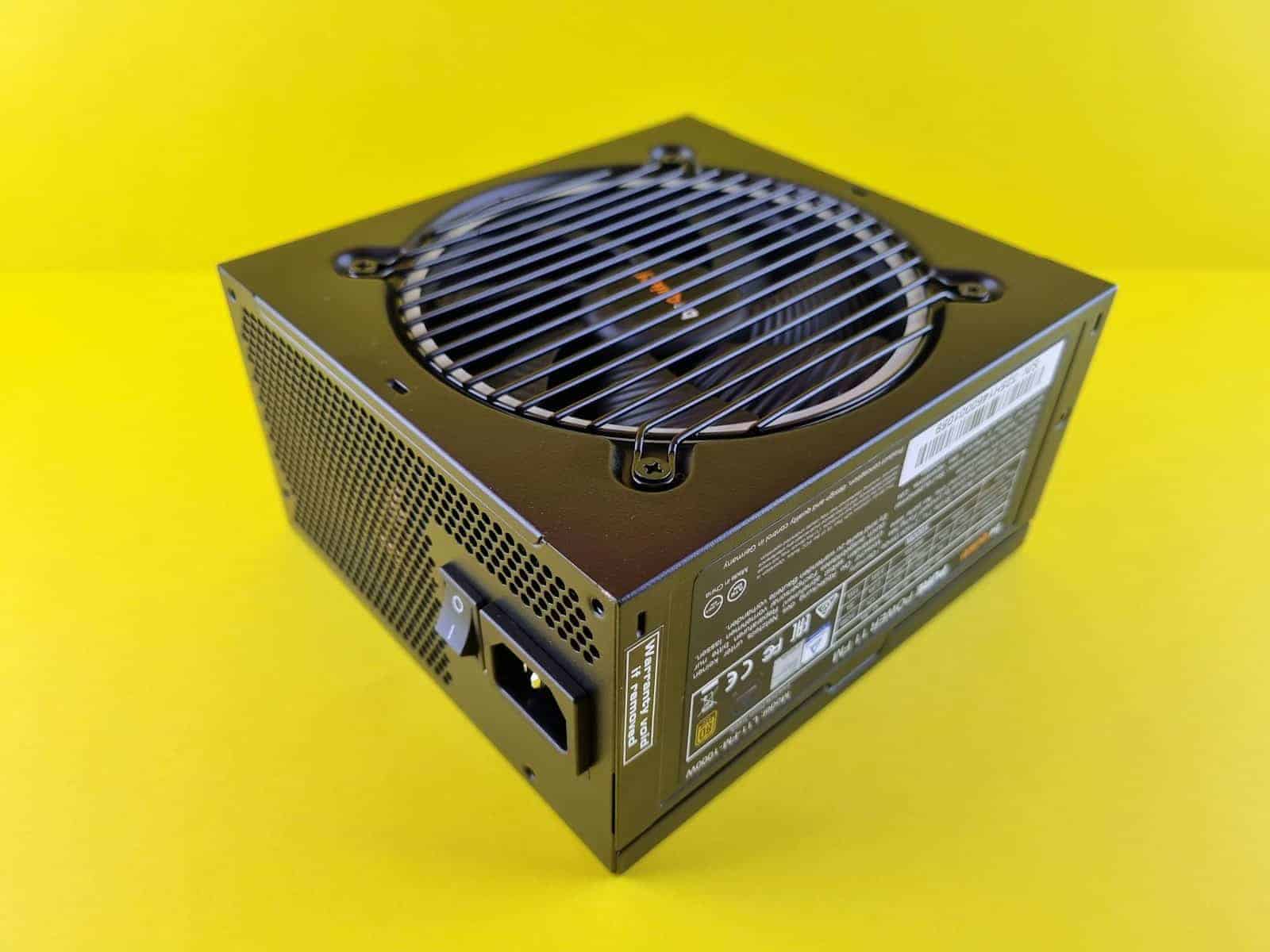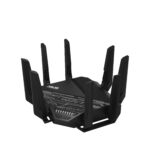The ATX 3.1 specification represents a significant advancement in the design and functionality of power supplies. It follows its predecessor, ATX v3.0, and introduces a range of refinements and technological updates. This new standard reflects the latest requirements for modern power supplies, ensuring they can support the increasingly high demands of contemporary computer hardware.
ATX 3.1 Overview
| Feature | Description | Benefits | Use Cases |
|---|---|---|---|
| Core Functionality | Enhanced Power Delivery | Double Rail 12V Sense | Power Delivery 3.0 (USB PD 3.0) |
| Power Delivery | Up to 100W (ATX 3.0) or 150W (optional) | Improved transient power handling | More efficient power delivery |
| Connectors | New 12VHPWR connector (optional) | Legacy connectors still supported | Supports next-gen NVIDIA & AMD GPUs |
| EPS (CPU Power) | Increased power delivery for high-end CPUs | Improved voltage regulation | Supports overclocking |
ATX 3.1 vs ATX 3.0: A Comparison
| Feature | ATX 3.0 | ATX 3.1 |
|---|---|---|
| Core Functionality | Enhanced Power Delivery | Enhanced Power Delivery (improved) |
| Power Delivery | Up to 100W or 150W (optional) | Up to 100W or 150W (optional) |
| Connectors | Legacy connectors | Legacy connectors + new 12V-2×6 connector (optional) |
| EPS (CPU Power) | Increased power delivery for high-end CPUs | Increased power delivery for high-end CPUs (improved transient response) |
| Hold-Up Time | 17ms | 12ms (Shorter, improved efficiency) |
| 12V Rail Sense | Single Rail | Dual Rail (Optional) |
| Sideband Signals | – | Added for improved power control and monitoring |
Key Features of ATX 3.1:
- Improved Power Delivery: To prevent power shortages, ATX 3.1 includes specifications for handling power surges, vital for high-performing GPUs.
- New Connector Standards: ATX 3.1 introduces a fresh cable plug design, enhancing compatibility with cutting-edge components.
- 12v-2×6 Standard: This specification adds a new approach to voltage regulation, aiming to streamline the efficiency of power supplies.
ATX 3.1 maintains the form factor that users have become familiar with, ensuring that it remains compatible with a wide range of hardware. The emphasis is on reliability and the ongoing evolution of internal power supply units (PSUs), as systems increasingly require more stable and robust power solutions.
The dedication to backwards compatibility is of particular note; the advancements within ATX 3.1 do not come at the expense of existing systems. This ensures users can upgrade parts over time without having to replace their entire setup.
Ultimately, ATX 3.1 represents a play for future-proofing in the ever-evolving landscape of PC components. It’s poised to ensure that power supplies are ready to take on the challenges of future hardware developments without blinking.
ATX 3.1 Specification: Overview
| Feature | Description |
|---|---|
| Release Date | September 13, 2023 |
| Major Changes | |
| 12V-2×6 Connector | Replaces the 12VHPWR connector, offering up to 600W of power for high-end GPUs and components |
| Shorter Hold-Up Time | Reduced from 17ms to 16ms, potentially improving power supply efficiency |
| 12+4 Pin Connector Sense Pin Settings | New settings for 150W and 0W sustained power levels, enabling better power management |
| Power Excursions on PCIe Slots | Permitted on the 12V rail up to 13.75A for 0.1ms (165W), allowing for higher power draw from PCIe devices |
| Other Changes | |
| Updated Table 3-1 | Specifies power requirements for different system components and power states |
| Optional I2C Communication for Power Supplies | Enables better communication and control between the power supply and motherboard |
| Increased Efficiency Requirements | Minimum 82% efficiency at 20% load, 84% at 50% load, and 86% at 100% load |
| Optional DC Power Input | Allows for direct DC power input from renewable energy sources or battery backups |
Key Benefits
- Increased Power Delivery: Supports the next generation of high-end GPUs and components with demanding power requirements.
- Improved Efficiency: Promotes more energy-efficient power supplies, reducing power consumption and waste.
- Enhanced Power Management: Enables more granular control over power delivery for improved system performance and stability.
- Future-Proofing: Accommodates future advancements in power delivery technologies and system requirements.
Fundamentals of Power
Maintaining efficiency and being ready for intense energy demands are key to power supply design, especially with newer computer technologies. The ATX 3.1 framework focuses heavily on delivering reliable power, with considerations for energy spikes and minimizing waste.
Power Efficiency and Ratings
Power efficiency is critical, and units are often rated by the 80 Plus system, signifying they are at least 80% efficient at various loads. Ratings range from 80 Plus Bronze to Titanium, with Gold, Platinum, and Titanium being top-tier, ensuring minimal power waste and reduced electricity costs.
Power Excursions
Modern graphics cards sometimes need a lot of power, more than a standard power supply unit (PSU) can provide. ATX 3.1 PSUs are designed to handle these power surges without causing any damage or disruptions. They provide a smooth and reliable power supply even when the demand is high. The ATX 3.1 units are built according to the Desktop Power Supply Design Guide specifications, ensuring they perform well with different computer shapes and sizes. In the latest ATX specification, the 12VHPWR connector has been replaced by the 12V-2×6 power connector to improve power delivery for modern demanding components.
ATX12VO Standard
The ATX12VO (12V Only) standard was introduced to simplify power supply design and improve energy efficiency by focusing solely on 12V rails, minimizing the multiple voltages traditionally offered.
Power Consumption
ATX 3.1 enhances the ability to supply ample power where it’s needed most. It aligns with the maximum power demands that rise as CPUs and GPUs become more potent, such as those from Intel, NVIDIA, and MSI.
ATX Form Factors
ATX and its variations dictate the size and shape of motherboards and PSUs, with ATX 3.1 ensuring these dimensions are appropriate for contemporary computer cases, providing flexibility and compatibility.
CPU and Graphics Support
ATX 3.1 PSUs support the latest CPUs and graphics cards, delivering power through efficient cables and connectors, capable of handling next-gen video and gaming requirements without a hitch.
Compatibility and Support
When upgrading a computer’s power supply or building a new system, it’s crucial to understand how ATX 3.1 power supplies fit with current and future components.
Motherboard Interface
ATX 3.1 power supplies are designed with compatibility in mind. They usually maintain the standard motherboard interface, ensuring a seamless connection with many existing motherboards. However, for the full benefit of the power supply’s capabilities, utilizing a motherboard that supports the ATX 3.1 specification is essential.
- Connectors: Ensures a fit with many motherboards; new connector designs may be seen.
- Sense Pins: ATX 3.1 supplies may include enhanced sense pins for refined voltage control through the motherboard.
Intel Technologies
Intel’s influence on power specifications has introduced several changes to support the latest technologies.
- ATX 3.1 power supplies often align with Intel Xeon and other advanced processors in providing stable and efficient power.
- Sideband Signals: These assist in precise control and monitoring of power flow.
- For detailed specifications, motherboard and power supply manufacturers, as well as intel.com, are valuable resources.
With evolving technology by Intel and the continuous development of motherboards, ATX 3.1 aims to set the bar high for power supply compatibility and functional support.
Advancements in ATX 3.1
The ATX 3.1 standard introduces a slew of upgrades designed to meet the increasing power demands of modern PCs.
Innovative Features
The ATX 3.1 standard, set by the industry consortium PCI-SIG, reflects significant improvements over its predecessors. It notably supports power spikes up to 13.75A for 0.1ms, allowing for a considerable increase in performance without the need for larger power supplies. This is critical for graphics cards and other components that may demand quick bursts of power. Additionally, the standard encompasses a new 12V-2×6 connector, optimized for future-proofing systems and enhancing power delivery efficiency.
Advancements by Manufacturers
At CES 2024, major strides were announced by manufacturers like FSP and Enermax, embracing the ATX 3.1 upgrade.
-
FSP is launching updated power supplies compatible with the ATX 3.1 specifications. They’re adjusting to the new standard’s requirements with solutions that integrate well with upcoming hardware.
-
Enermax has been proactive, showcasing its ATX 3.1 PSUs with 12V-2×6 connectors. The PlatiGemini models are versatile, catering to both 24-pin and 10-pin motherboard configurations. Moreover, innovations like the Aquaflo LCD, Liqtech XTR AIO, and the Xtreme and EF1 pumps represent steps forward in cooling solutions. For PC cases, the Enerpazo EP33 and EP23 have been introduced, integrating seamlessly with the new PSUs.
Electrical Components
In the domain of desktop power supplies, ATX 3.1 signifies a step forward with its modernized electrical components. The design of these power units hinges on standardized electrical characteristics, although they come in various mechanical sizes. Capacitors play a substantial role in regulating the power supply, ensuring that the energy delivered to the computer’s components is stable and clean.
One pivotal change in the ATX 3.1 specification concerns connectors, particularly the introduction of the 12V-2×6 connector. This development addresses the need for handling increased power demands, especially from high-end graphics cards. The following lists highlight key points about ATX 3.1 electrical components:
Connectors:
- A new 12V-2×6 power connector improves upon previous designs.
- Thick 16 AWG wire is required for the 12V-2×6 to meet the amperage necessities.
Electrical AC Input:
- The AC input requirements remain stringent to accommodate international voltage variations.
DC Output:
- The DC output must adhere to precise voltage and current standards for optimal performance.
Power supplies following the ATX 3.1 guideline are engineered to be more efficient and reliable. The capacitors within these systems are carefully chosen to match the prescribed longevity and tolerance levels. This attention to detail ensures that the energy feeding into the PC’s motherboard and other components is of high quality, which is crucial for overall system stability.
Connectivity Options
When it comes to the connectivity offered by the ATX 3.1 power supply unit (PSU), it’s all about ensuring components get the correct power and that future technologies are supported. The ATX 3.1 specification introduces a significant change in the form of a new power connector, shifting from the traditional 12VHPWR connector to an updated version known as the 12V-2×6.
Key Connectors:
- 12+4 Pin: This is the new power connector expected to be standard on ATX 3.1 PSUs, replacing the older 2x 8 pin connector.
- 12V-2×6: A newer form factor to support increasing power demands of modern hardware.
Beyond just power, ATX 3.1 PSUs maintain compatibility with various data and display connections found in most systems. While the PSU itself does not directly provide these connections, it enables the function of motherboards that do. Those motherboards can carry:
- Ethernet for internet connectivity;
- HDMI and DisplayPort for high-definition video output;
- DVI for older, yet still common, video connections;
- eSATA for external storage devices;
- FireWire for legacy multimedia device support.
Table of Common Connections:
| Connection Type | Purpose |
|---|---|
| Ethernet | Internet connectivity |
| HDMI | High-definition video |
| DisplayPort | Advanced video output |
| DVI | Video output |
| eSATA | External storage connection |
| FireWire | Legacy device connection |
It’s essential for users to understand that while the ATX 3.1 PSUs cater to powering the system, their direct impact on other connectivity types such as Ethernet or HDMI is subtly supportive rather than direct. They provide the required energy so that the motherboard can offer these interface options without any hiccups. This is crucial for a seamless user experience, especially when using high-power GPUs and other peripherals that rely on such connections.
Adapters and Cabling
The latest ATX 3.1 power supply standard introduces significant changes in power connectors and cabling. These updates aim to accommodate the increased power demands of modern computer components. One notable shift is the adoption of a new 12+4 pin connector, moving away from the traditional 2×8 pin setup.
Here’s a quick rundown of what these changes mean for users:
- 12VHPWR to 12V-2×6 Transition: The new power connector design addresses efficiency and convenience, ensuring compatibility with future hardware.
- 12+4 pin Connector: Anticipated to be standard on all ATX 3.1 PSUs, this connector supplies power directly to the motherboard and high-performance graphics cards.
Adapters will likely play a crucial role for those upgrading to ATX 3.1 while still using components with older connector types. These adapters could range from simple cables to more complex components. They will ensure that legacy hardware is not left behind as the technology moves forward.
Key Points:
- Backward Compatibility: Current devices will still function, thanks to adapters bridging the gap between connector types.
- Future-Proofing: Adoption of the new connectors prepares systems for next-generation hardware needs.
Lastly, despite these advancements, it’s important to keep in mind that power excursions are now allowed on the 12V rail through the motherboard’s PCIe slot. However, no such excursions are permitted for the 3.3V signals.
As ATX 3.1 power supplies roll out, users should keep informed about the available adapters and the implications for existing system cabling, ensuring a smooth transition to the new standard.
Operational Software
When considering the newly introduced ATX 3.1 specification, one should note its implications on the operational software. The ATX 3.1, like its predecessors, continues to shape the way power supplies interact with the component they supply and the software that manages these interactions.
Essential software functions for ATX 3.1 include:
- Monitoring: Software tracks power supply status, ensuring devices receive adequate power.
- Management: Allowing for adjustments in the power supply to meet varying demands efficiently.
- Protection: Implementing safeguards that react swiftly in case of power irregularities.
These tasks rely on accurate communication between the power supply unit (PSU) and the software. The ATX 3.1 standard has refined this communication, providing more precise data that the software can use to optimize performance and stability.
The table below shows the core operational software features tied to ATX 3.1 standards:
| Feature | Description |
|---|---|
| Real-time Monitoring | Tracks PSU performance and power output continuously. |
| Dynamic Adjustment | Modifies power delivery according to system load requirements. |
| Efficiency Calibration | Ensures energy consumption is kept to a minimum. |
| Diagnostic Reporting | Identifies and reports PSU anomalies. |
With these features, the software becomes a vital component in managing the PSU, leading to enhanced system reliability and energy efficiency. The operational software does not just protect hardware; it also contributes to the longevity of the components and helps maintain a greener footprint by optimizing power usage.
Keeping the communication clear and responsive between the PSU and software is integral to the system’s overall health, something that ATX 3.1 has improved upon. As power demands grow, the role of the software in operational management becomes increasingly significant, ensuring that the system remains stable and efficient under a wide range of conditions.
Safety and Compliance
The ATX 3.1 standard sets new benchmarks for power supply units (PSUs) in terms of safety and compliance. Manufacturers now need to satisfy stringent regulations to meet these comprehensive benchmarks.
Safety Standards: PSUs must adhere to product regulations, which vary based on the design and end use of the product. These safeguards ensure that the PSU operates within safe parameters.
Intel ATX12VO Compliance: Intel’s ATX12VO specification plays a significant role. It streamlines power delivery by focusing on the 12V output, which modern components primarily use. Compliance not only enhances power efficiency but also promotes safety through reduced electrical complexity.
Performance and Stability: ATX 3.1 improves upon its predecessor by optimizing power distribution to support PCs under various load conditions. This enhancement is crucial for preventing power-related issues and ensuring user safety.
PCI-SIG Affiliation: By aligning with PCI-SIG, ATX 3.1 validates support for emerging PCIe standards, which becomes more critical with high-power components.
Certification and Efficiency: PSU models compliant with ATX 3.1 often boast 80 Plus ratings indicating high energy efficiency, which is directly tied to reduced heat output and safer operation.
Manufacturers must rigorously test their products against these safety protocols to attain relevant certifications—a critical step ensuring that PCs are safe for users and the environment alike.
Market Trends and Consumer Demands
The ATX 3.1 power specification has brought about notable shifts in consumer expectations and market trends. Buyers seek efficient and reliable power supplies that align with the 80Plus certification’s energy standards. This certification promotes energy efficiency in ATX power supplies, with several tiers ranging from standard to titanium ratings, signaling the unit’s efficiency at different loads.
Efficiency and Innovation:
ATX 3.1 has catalyzed a demand for units that not only conserve energy but also offer advancements in power stability and compatibility with emerging hardware. The drive towards efficient computing is evident in market projections, which indicate a steady climb in energy-conscious purchases.
- Consumer Priorities:
- Energy efficiency
- Cost-effectiveness
- Longevity and reliability
- Compatibility with newer hardware
Growth Factors:
Market analysis points to a robust expansion of the ATX power supply sector, propelled by an uptick in desktop and industrial computer utilization. This growth is underpinned by an annual compound growth rate pegged at 5.1% from 2017 to 2030.
Trends Overview:
- Energy Efficiency: The push for 80Plus certified power supplies underscores the market’s pivot towards energy savings and reduced operational costs.
- Technological Compatibility: The ATX 3.1 standard is well-received for its forward-thinking design, ensuring compatibility with next-gen components.
- Market Expansion: The desktop and industrial sectors fuel the increasing consumption of ATX power supplies.
Consumers and manufacturers alike show a keen interest in balancing power performance with environmental considerations, making the ATX 3.1 specification a critical driver of future market trends.
Environmental Considerations
When talking about the environmental impacts of the ATX version 3.1 power supply, efficiency is a key player. Efficient power supplies use less energy to do the same job as less efficient ones, which means they not only save money for the consumer in the long run but also help reduce the strain on the environment.
Efficiency: ATX 3.1 power supplies are designed to be more efficient by adhering to stricter efficiency standards. These improvements in efficiency reduce energy wastage, which in turn minimizes the environmental footprint.
To understand how these power supplies address environmental concerns, here’s a breakdown of their efficiency features:
- Reduced Energy Consumption: They are crafted to operate using less energy, which leads to less heat generation and a decrease in cooling requirements.
- Longevity: By running cooler, the components within these power supplies tend to last longer, which means they don’t need to be replaced as often — reducing waste.
- Compliance with Regulations: The latest ATX standards align with international efficiency guidelines, ensuring that power supplies contribute to global efforts for energy conservation.
An efficient power supply is not just a beneficial choice for the consumer’s wallet but it’s also a step towards a greener future. By choosing products that meet ATX version 3.1, individuals play a part in a larger movement towards sustainability.
Frequently Asked Questions

When it comes to power supplies, the ATX 3.1 standard is the latest development tech enthusiasts are talking about. It brings several improvements and changes that are significant in the realm of PC builds.
What improvements does ATX 3.1 bring over previous standards?
ATX 3.1 introduces enhanced power delivery capacities and better efficiency for high-performance components. It allows for power excursions on the 12V rail, providing more stability and power for advanced graphics cards.
How does ATX 3.1 affect power supply compatibility with the RTX 4090?
The RTX 4090, NVIDIA’s powerful graphics card, requires robust power solutions. ATX 3.1 power supplies are designed to meet these needs, offering the necessary connectors and power output to support such high-end GPUs efficiently.
What are the main benefits of upgrading to a power supply with ATX 3.1 specification?
Upgrading ensures compatibility with the latest components, including next-gen GPUs that require more power and have higher transient spikes. It also potentially offers better power efficiency and stability under heavy loads.
How does 12VHPWR differ from traditional power connectors in ATX 3.1 power supplies?
The 12VHPWR connector is a new addition in ATX 3.1 supplies, providing a more compact and efficient connection that can deliver more power to GPUs compared to traditional PCIe power connectors.
Can an ATX 3.1 power supply be used with motherboards designed for earlier ATX standards?
Yes, ATX 3.1 power supplies maintain backward compatibility, meaning they can be used with motherboards crafted for previous ATX versions, though full benefits are realized when paired with ATX 3.1 compliant motherboards.
What should consumers look for when selecting an ATX 3.1 compliant power supply unit?
Consumers should check for the power supply’s wattage rating to ensure it meets their system’s requirements, look for 12VHPWR connectors if using the latest GPUs, and consider the unit’s efficiency ratings for better energy usage.







